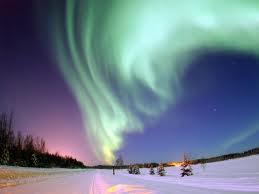The Galactic Filaments and Sheets
Pic 13: Filaments of Galaxies.
The Universe has countless numbers of Galaxies. Each of
the dots in the above picture is a galaxy. There are
probably more than 100 billion galaxies in the observable
universe. Perhaps many Trillions more exist in the universe
we have not yet observed! Galaxies are usually separated
by distances on the order of millions of parsecs (or
megaparsecs). Intergalactic space (the space between
galaxies) is filled with a tenuous gas of an average density
less than one atom per cubic meter.
The majority of galaxies are organized into a hierarchy of
associations called clusters, which, in turn, can form larger
groups called superclusters. These larger structures are
generally arranged into sheets and filaments, which
surround immense voids in the universe.
Allah Subhanahu Wa Taala says:
By the heaven full of Hubuk ( paths, fibers, weave) (7)
The Great Wall (also called Coma Wall), is one of largest
known super-structures in the Universe. It is a filament or a
filament wall of galaxies which measure over 500 million
light-years long, 300 million light-years wide and 15
million light-years thick. It was discovered in 1989. It is not
known how much farther the wall extends due to the plane
of the Milky Way galaxy in which Earth is located. The gas
and dust from the Milky Way obscures the view of
astronomers and have so far made it impossible to
determine if the wall ends or continues on further than they
can currently observe! These sheets and filaments weave
together like a textile cloth. In this big weave the giant
galaxies are just like small glittering specs!
And there is some thing bigger than it!
.
.
.
The Building of the Universe……….
At first, scientists thought that the universe is mostly
vacuum, and they gave it the name “space”. In the late
twentieth century, scientists have discovered something
new. They found that the universe is certainly like a
building made of small blocks. The conventional model for
galaxy evolution predicts that small galaxies in the early
Universe formed into the massive galaxies of today by
coalescing into clusters, superclusters, filaments and sheets.
These are the “small” lego-like building blocks that make
the structure or building of the universe.
Pic 13: The structure of the Universe. The small line on the top
shows a scale of 100 Million Light Years!
Lego-like “building blocks” initially detected by Hubble
likely contributed to the visual construction of the Universe
as we know it. NASA’s Spitzer Space Telescope
observations confirmed that these galaxies are some of the
smallest blocks of the Universe which is made like a
building. Look closely at the picture above and you may
see some patterns and architecture to it.
This structure has a geometry and architecture of its own.
There are “voids”, “walls”, cluster areas or “rooms”, vast
hallways and “passages”.
Current interpretations of astronomical observations
indicate that the age of the Universe is 13.73 billion years,
and that the diameter of the observable universe is at least
93 billion light years. This is just the part of the universe
that we can observe. Only Allah knows what else there is in
the universe and how big it really is. There is much work
that still need to be done in cosmology to even start to
appreciate the large-scale structure of the universe.
This is truly mind boggling….Something that that the mind
finds difficult to imagine. Is than some thing bigger than
this? Something that will make it all look like a spec of
dust?
Certainly there is!!!!!!!!
.
.
.
There is something bigger so big that
it will make all of the above like a
spec of dust.
.
.
.


















